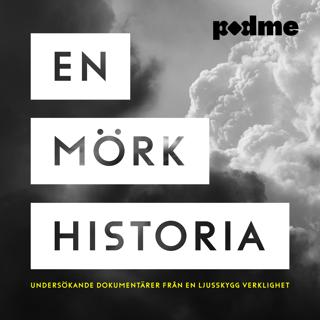
David Foster Wallace's Infinite Jest
One of the biggest novels of the late twentieth century - both literally and figuratively - was published in February 1996. Infinite Jest by American author David Foster Wallace is nearly 1100 pages long, but the ground-breaking work of literary fiction also became a bestseller.Lucy Burns speaks to the editor of Infinite Jest, Michael Pietsch.
22 Feb 20189min

The Boy in the Bubble
David Vetter lived his whole life sealed off from the outside world in a completely sterile environment. He was born with a rare genetic disorder, Severe Combined Immunodeficiency Disease, which made him hugely susceptible to infections. He died from the disease at the age of 12 on 24 February 1984, when a bone marrow transplant failed. Rachael Gillman has been speaking to his mother Carol-Ann Demaret.(Photo: David Vetter and his mother Carol-Ann Demaret Credit: Carol-Ann Demaret)
21 Feb 20189min

Jimmy Swaggart's Fall From Grace
In February 1988 Jimmy Swaggart, one of America's most successful televangelists, was forced to make a humiliating public confession from the pulpit. He had been caught in the company of a New Orleans prostitute. Swaggart's tough no-nonsense style of preaching had won him a huge global following. He had also been fiercely critical of other evangelical preachers who had become mired in sexual scandals. Mike Lanchin hears from the Baton Rouge news reporter Edward Pratt, who followed Swaggart's rapid rise to fame and sudden fall.Photo: Jimmy Swaggart breaks down in tears on televised sermon as he confesses his relationship with a prostitute, Feb 1988 (Alamy)
20 Feb 20188min

Ghana Must Go
Over a million West African migrants, most of them Ghanaian, were ordered to leave Nigeria at short notice in 1983. The Nigerian economy was suffering a downturn. But hundreds of thousands of Ghanaians then found themselves stuck outside Ghana's border unable to get back home. Alex Last has spoken to one Ghanaian who took part in the forced exodus.Photo: Migrants leaving Nigeria wait at the border to enter Benin. Credit: Michel Setboum/Getty Images.
19 Feb 20189min

The Furies Collective: Lesbian Separatists
A group of feminist activists in Washington DC set up a commune to live independently from men in 1971. They called themselves the Furies Collective, and they were some of the first lesbian separatists. Charlotte Bunch was one of them.Picture: The Furies, packing and distributing the newspaper at 219 11th St. SE, in 1972. Left to right: Ginny Berson, Susan Baker (not a Fury), Coletta Reid (standing), Rita Mae Brown, Lee Schwing (picture by Joan E Biren)
15 Feb 20189min

Leonardo's Lost Notebooks
In February 1967, it was revealed that two notebooks by the great 15th-century Italian artist, Leonardo da Vinci, that had been lost for centuries, had been discovered in the national library in Spain. Louise Hidalgo talks to two people with a personal interest in the discovery, Da Vinci scholar Pietro Marani, and robotic engineer, Mark Rosheim, who used Leonardo's drawings to recreate the artist and inventor's lost Robot Knight. (Photo: A self-portrait by Leonardo da Vinci dated circa 1500. Credit: Hulton Archive/Getty Images)
14 Feb 20189min

Women's Rights In Iran
Iran's first ever minister for Women's Affairs was appointed in 1975. Mahnaz Afkhami was the first person in the Muslim world to hold that position. While she was Minister of Women's Affairs, Iran's legislation granted women equal rights regarding divorce, raised the minimum age of marriage to 18 and supported women's employment with maternity leave and childcare provisions. Farhana Haider has been speaking to her about being the only woman in the pre-revolutionary Iranian cabinet.Photo: Mahnaz Afkhami at the UN in 1975. Credit: Mahnaz Afkhami
13 Feb 20189min

Hull's 'Headscarf Revolutionaries'
In 1968, a group of women from the British fishing port of Hull staged a successful campaign to improve safety in what was then one of the most dangerous industries in the world. Following the deaths of nearly 60 men in three separate trawler accidents, the so-called Headscarf Revolutionaries picketed the port and lobbied ministers in London until the owners agreed to changes. Simon Watts hears the memories of one of the women, Yvonne Blenkinsop.(Photo: Yvonne Blenkinsop (left) and three other campaigners in 1968. Credit: Mirrorpix/Getty Images)
12 Feb 20188min





















